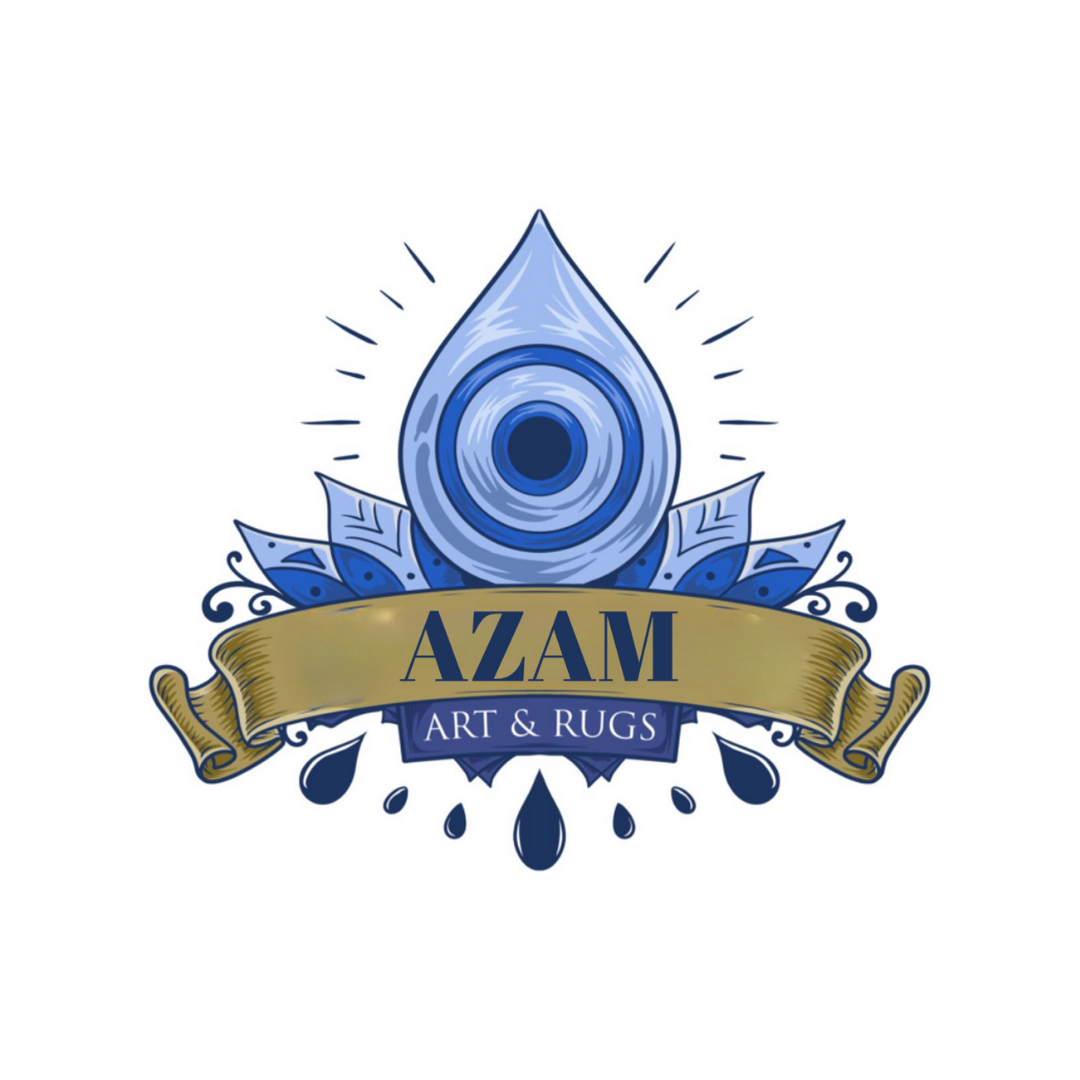How to Take Care of Handwoven Rugs
-
Cleaning and Daily Care of Handwoven Rugs
In order to preserve a handwoven rug, cleanliness is the first and most important step. Rugs are not subject to hard-and-fast rules concerning when and how often they should be cleaned because every rug manufactured by hand is unique, and every household exposes rugs to different amounts of wear and dirt. Here are some basic instructions that an average home owner can use to care and clean oriental rugs. An old-fashioned hand broom with natural bristles or an electric rug sweeper are both recommended for regular cleaning. It is equally important to brush the underlay of the rug and the floor beneath it. It is important to be aware that regular vacuuming will eventually loosen the knots and pull the fibers out of the pile. The revolving brush attachment will also pull apart the fibers. It is best to use the nozzle attachment once a month. Using an old-fashioned rug beater every few weeks or shaking outside regularly will remove the harmful dust and grit that become lodged in the rug base. Never beat hand-made and antique rugs violently.
-
Washing or Cleaning
How often a rug should be cleaned will depend on the amount of traffic and the type. This may be done every six months to twice a year. If the rug has a light color, it probably needs to be cleaned more often, but if it has a dark color and intricate patterns, it may be less obvious. A rug that needs cleaning will first show signs of needing cleaning by the fell of the pile, which may feel coarse or harsh instead of velvety and smooth as it should. If a fine powder of dust, grit or loose fiber falls into your hand after folding up one corner of the rug, this is another indicator that the rug requires cleaning.
-
Hand Cleaning at Home
It may seem daunting to clean your rug at home. It's a time-consuming process that requires patience and care, but it is a simple job that can be accomplished by anyone if they follow these simple instructions. Besides saving money, hand cleaning has many other benefits. Seeing every fiber become fresher and more vibrant will be very satisfying. Additionally, it will provide an in-depth understanding of the carpet. Every color and motif will come into view with the close attention that hand cleaning requires. The vast majority of rugs can be cleaned at home except for antiques, rugs that need repair, silk rugs, and rugs that are not colorfast. These should receive the attention of a professional.
-
Preperation
The preparation step is as vital as the washing process itself. Rub a brightly colored area gently with a damp white cloth to test for colorfastness, and then inspect the rug carefully to make sure it is not in need of repair. When a rug is wet, it becomes more fragile; therefore, most repairs ought to be done before it is washed. Only repiling is better done after washing, because the color can be matched more accurately after it is cleaned. Dust and dirt damage rugs more when they're wet than when they're dry. After you clean your rug, brush and beat it thoroughly to remove as much loose dust as possible. Finally, find a flat, clean hard surface to clean your rug on. For small rugs, a large table is best for cleaning them.
-
Method
Lay the rug with the pile-up on a hard flat surface. Dip the brush in the liquid and apply it in gentle even vertical strokes. Vigorous brushing or scrubbing will not clean thoroughly and is likely to damage the rug in its wet state. Start in one corner, brushing up and down, with and against the pile with even overlapping movements. The amount of shampoo applied, and the pressure of the brush should be as constant as possible over the entire rug surface. Once the rug is brushed vertically (lengthwise) then brush horizontally of from side to side across the pile, with the same gentle overlapping strokes. The pile should be thoroughly cleaned by now.
Finally, brush gently in the direction of the pile as the rug dries, so that the pile is lying in the right direction. Try to apply the cleaning solution sparingly, so that the base does not become wet. It is very difficult to dry it thoroughly since it is firmly encased in millions of tight little knots. If the rug is returned to the floor while the warp and weft are still slightly damp, they will probably start to rot in a few months, the base will be extremely brittle. During the entire cleaning process handle the rug as carefully as possible, since while it is wet, it is extremely fragile, so it is very easy to cause damage.
-
Drying
Small light rugs can be pegged by the kilim and on a clothesline. Large rugs are more easily dried flat on a hard, clean surface. Paving stones or concrete are ideal. Do not dry on a lawn, since the base will absorb the moisture of the grass. If it is impossible to use such an area, or the weather does not permit outdoor drying, then an area of the house can be prepared. Preferably use a room where there is a warm air current heating system. Do not drape the rug, it must be allowed to dry flat, and don't walk, or place anything on it until it is completely dry. The warp, weft, and pile of a completely dried rug should feel soft and pliable. Remove the dried dirt and shampoo powder by gently brushing with a soft dry brush, or by gently using the vacuum cleaner. An alternative method used in Scandinavia and Turkey is to place the rug pile downward on virgin snow and pat the back gently all over. This patting should be just firm enough to press the pile into the snow, but quickly and gently so it won't make the rug too damp. As the rug is lifted away, all the dust and grime are left on the snow. This method is only suitable for small rugs since it may be inconvenient and difficult to dry a large one during the winter.
-
Things to Avoid
Washing machines and dryers should never be used for any delicate hand-made item. With rugs the vibration, water temperature, and harsh detergents will cause irreparable damage; possible color-run from the hot water and the detergents, and a cement-like wall once dry. It may even reduce the rug to shreds. Many films and books show scenes of Eastern weavers washing their rugs in streams and rivers. This has led many owners to wrongly believe that a complete soaking is good. This process is only used for fairly new rugs. They are washed very quickly then laid out to dry immediately in the baking sun. Antique and silk rugs are never washed in this way. In fact, usually, this river washing is used only as the first washing before the rug is put into use or sold, mainly to remove the millions of tiny wool fibers that become embedded in the pile after clipping and the loose excess dye stuffs This total immersion is not advisable. It can cause color run, and it soaks the warp and threads unnecessarily. The warp and weft do not need such a cleaning, since they are totally enclosed by the knots of the pile, and so are not exposed to dirt. Some firms that advertise themselves as expert rug cleaners use electric rotary brushes. These machines were designed for use on machine-made rugs, and should only be used on such. The coarse bristles and the high-powered circular motion of the brush will twist and break the delicate wool fibers of an Oriental rug. Again dry cleaners sometimes advertise themselves as rug cleaners. Their services may be useful for machine-made rugs, but an oriental handmade masterpiece should never be subjected to the strong chemicals that these firms use. The damage may become apparent only after several months and the damage is irreparable.
-
Dealing with Spills and Stains
Water spillage is perhaps the most common accident at home. When this occurs, appropriate steps should be immediately taken. Using an undyed piece of cloth, try to absorb as much of the spilled water as gently blot the pile. Do not try to wring it. A hairdryer, set a moderate heat, is probably the best implement for drying. Dry the rug thoroughly from both sides. The pile may be a little damp when dry. Gently touch it back in shape with the fingers. Failure to carry out the above steps as quickly as possible may result in two problems; color run, and the rotting of the warp and weft. Should these problems occur it is best to seek the help of an expert restorer. In a busy household, a variety of substances may be accidentally spilled on a rug. Excluding the treatment for silk or antique rugs, most of these accidents can be tackled at home. The first step with any substance is the same as with water. Soak up as much liquid as possible with a clean, undyed cloth. This simple absorption method, when carried out as quickly as possible, is the greatest contribution to stain prevention. The longer the spill remains, the more difficult it is to clean, and the greater the danger of a permanent stain. The next stage is to make a color-fastness test. Rub a colorful patterned area with a damp white cloth. If the cloth takes tackle the problem. If the rug is colorfast, then the stain can be removed home with a variety of common household items. In dealing with every type of stain, work from the top of the stain to spread, never use hot water, bleach, or washing up liquid, and remember that gentle repetition is more effective than harsh scrubbing.


